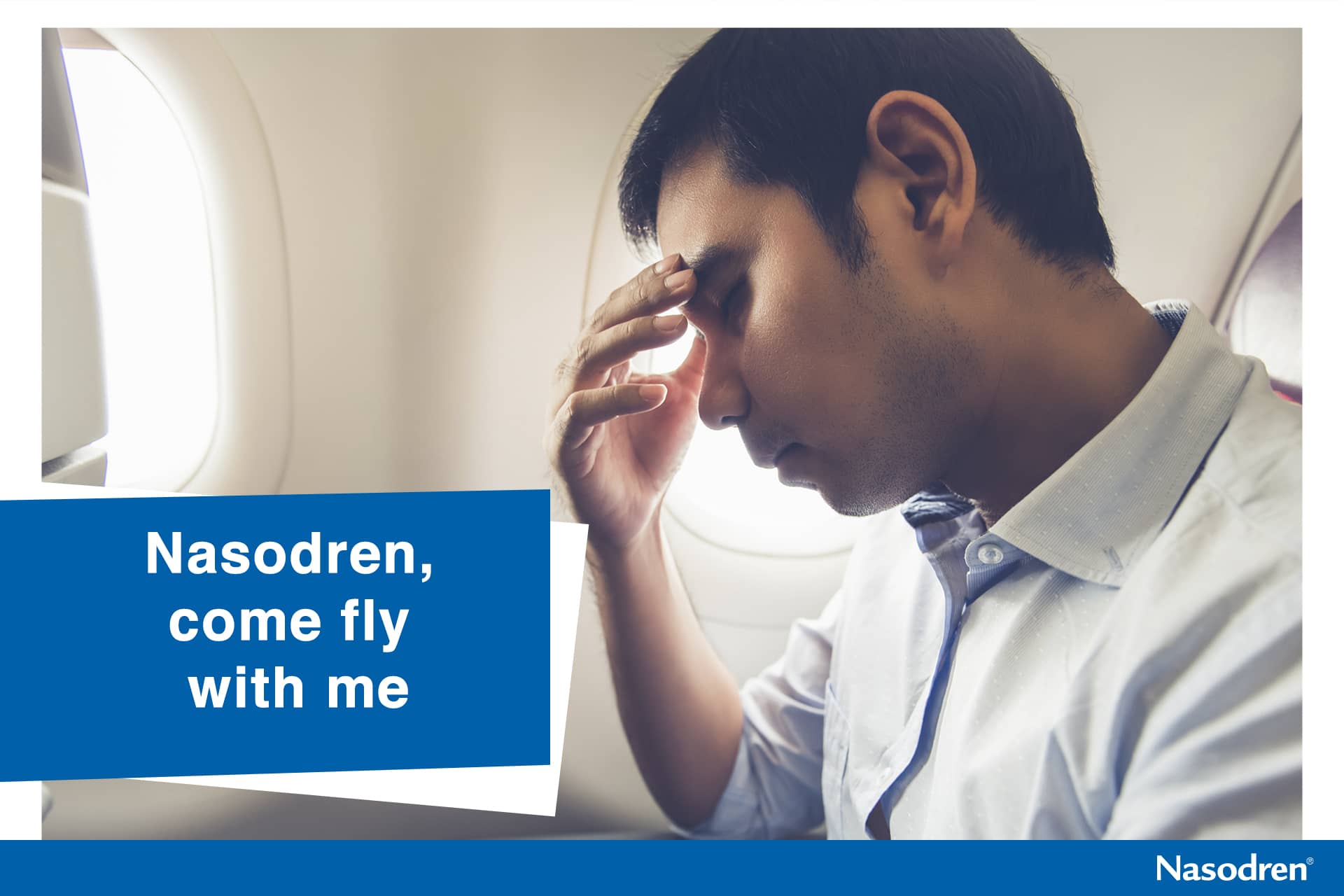Time to fly!
For some, holidays are an opportunity to chill, relax and break the routine, while others take it as a way to travel and live fascinating experiences. However, nobody expects these days to bring misery into their lives, but it happens more than you may think. Usually, illnesses are the ones to blame, as they can hit you just in time to spoil such long-awaited days. What’s more, some people’s suffering starts right from the moment they get on a plane.
Earache, nasal blockage and pain that radiates from the cheeks to the jaws. Does that sound familiar to you? When traveling by plane, more than a few people (sinusitis sufferers, among them) end up struggling with annoying symptoms due to changes in the pressure. That happens for a reason but, fortunately, there are ways to ease the pain and have a smooth flight. How? Read on and find out!
It’s all connected
To better understand flying-related symptoms and why they can affect patients with sinusitis (whom we can help!), let’s take a quick anatomy lesson. The middle ear, the ear part internal to the eardrum, is connected to the nose through a little tube known as the Eustachian tube, which opens and closes to equalize pressure between the middle ear and the atmosphere.
The Eustachian tube contains nasal-like mucosa fitted with cilia, microscopic ‘hair’ that prevent secretions from accumulating. However, if you happen to have excess mucus in the Eustachian tube, which can be caused by different conditions such as sinusitis or allergies, you may have to cope with symptoms linked to the nasal, paranasal and ear areas while being on board.
Basically, this is how the process works: when a plane takes off, the surrounding air pressure gets lower and that causes the air in the middle ear to expand, thereby affecting the vibration of the eardrum and triggering different symptoms (discomfort and even bleeding behind the eardrum) that tend to be worse in people suffering from nasal or paranasal congestion. The same problems can occur when the landing phase starts, but in this case because of the air pressure going higher all of a sudden, which can leave the eardrum imbalanced.
A tip for sleepyheads
If you are one of those who fall asleep as soon as you sit in a chair and spend the whole flight resting like a baby, take note of this. The Eustachian tube gapes open when we swallow, which is essential to equalize pressure. However, while sleeping, the pace of such an action lowers and, therefore, that can lead to problems during the take-off and landing phases. Then, try to stay awake until the plane has reached its maximum altitude; otherwise, you might start feeling sick.
Nasodren: An aid that comes in handy
We have already mentioned the multiple benefits that Nasodren® provides us with when battling sinusitis, but that’s not all. Made up of Cyclamen europaeum extract (100% natural and preservative free), Nasodren® is medically proven efficient to ease plane-related issues involving the middle ear as well. Why? Nasodren®’s unique mechanism of action does not only allow for sinonasal clearance, but it can also help drain the backup of thick secretions trapped in the Eustachian tube. By keeping a correct functioning of the cleansing system of the middle ear, you’ll be less likely to have pain associated with air pressure.
Ideally, you should use Nasodren® as a preventive treatment about three or four days before traveling. That way, you can ensure that the Eustachian tube runs smoothly when you fasten your seatbelt.
Hopefully, the next time you are on board, you won’t have to be opening and closing your mouth or blowing your nose. It could be just fine.









